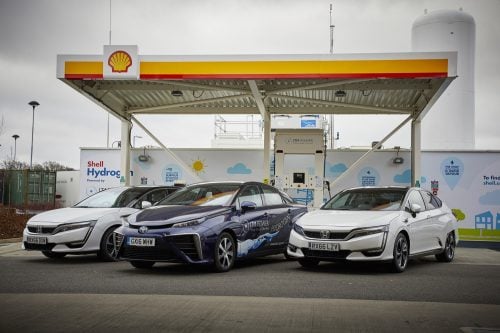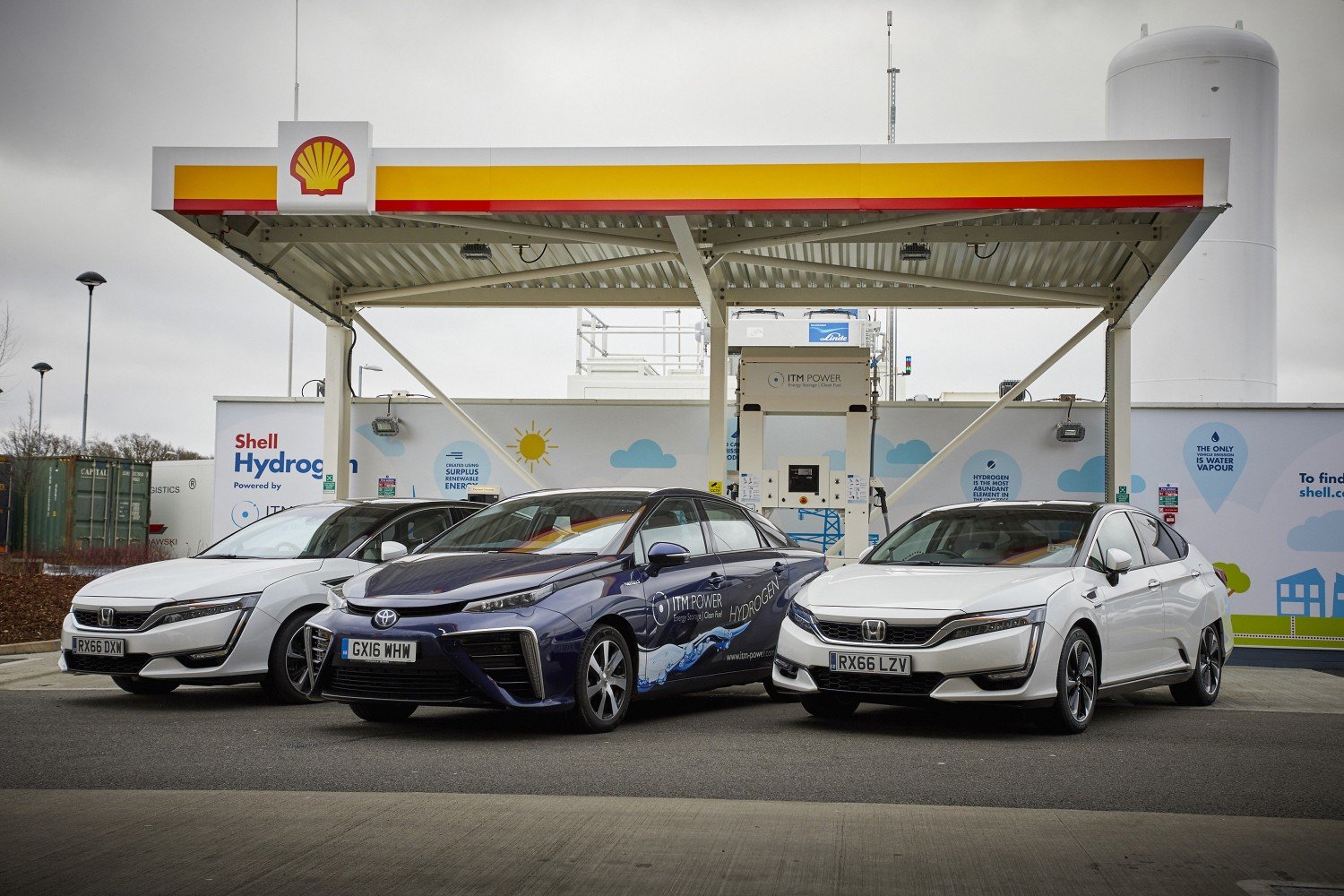The hydrogen fuel cell electric vehicle market is set to grow at a compound annual growth rate of 82 percent during 2017-2021, according to a new market analysis.
Research and Markets say their new report – Global Hydrogen Fuel Cell Vehicle Market 2017-2021 – is the product of an in-depth **market analysis prepared in consultation with industry experts.
** A market analysis refers to research on a market, market sector, certain consumers, competitors, or a combination of them.
 A fuel cell electric vehicle can be refuelled at a hydrogen refuelling station much like a conventional petrol or diesel car except that the tank fills with hydrogen. Image: ITM Power
A fuel cell electric vehicle can be refuelled at a hydrogen refuelling station much like a conventional petrol or diesel car except that the tank fills with hydrogen. Image: ITM Power
A fuel cell electric vehicle (FCEV) is a motorized vehicle powered by a fuel cell that burns hydrogen to produce electricity to drive the motor.
It works something like this: hydrogen from an on-board fuel tank combines with oxygen from the air to generate an electric current that drives the motor that turns the car’s wheels. Any excess electricity can be stored in a battery to deliver extra power when needed (during acceleration).
Zero emissions challenge
FCEVs can be quickly refuelled from a pump like a petrol or diesel vehicle, except that the tank fills with hydrogen gas. They have a range of about 300 miles per tankful, like conventional vehicles.
The idea is attractive because there are no greenhouse gas emissions from the fuel cell vehicle’s tailpipe. What is less attractive from an emissions point of view is that the process that makes the hydrogen is currently not so “green.”
However, the new report suggests that progress is being made in research and development on how to produce hydrogen as a “green fuel” with zero emissions.
Hydrogen produced by electrolysis using renewable energy sources
One promising option is to make the hydrogen using electrolysis powered by energy from renewable resources.
For example, imagine a wind farm that produces energy for the grid when there is wind and there is a demand, and at other times when there is wind but no demand from the grid it could power electrolyzers to make hydrogen.
The electrolyzers could range in scale: from the size of a small appliance for distributed production to industrial scale for centralized production.
ITM Power’s “hydrogen mini-grid” project that is running next to the M1 motorway in South Yorkshire in the United Kingdom is an example of such a scheme. It has a 225kW wind turbine coupled directly to an electrolyzer.
Electrolysis is not an attractive option if it uses main grid electricity – because usually most of this been generated using energy sources and processes that generate greenhouse gases.
Lack of infrastructure is a barrier to growth
However, no matter how good the technology is, it is not enough to grow the market. One barrier to growth is the development of infrastructure – for hydrogen production and dispensing to motorists.
It is like the proverbial chicken and egg problem – manufacturers will make more electric vehicles that use hydrogen fuel cells if there is an infrastructure of hydrogen production and filling stations for consumers. And fuel suppliers will invest in hydrogen production sites and filling stations if there are lots of cars on the road that need them.
One fuel supplier that is working on this problem is Shell. In Germany, for example, they have set up a joint venture with car maker Daimler, the gas company Air Liquide and Linde, and energy companies Total and OMV, to roll out a nationwide network of 400 hydrogen filling stations by 2023. The venture is also part-funded by German government and European Union money.
The new report says currently around 80 million tons of hydrogen are produced each year worldwide at an average price of $1.75 per kilogram. To sustain annual growth, it suggests the global fuel cell market needs another 90 million tons a year of production.
The authors say significant investments are now being made to scale up hydrogen production based on emissions-free technology. So it looks like a key driver of the market is about to engage.
Hydrogen refuelling stations currently too costly for residential installation
The report notes that one major factor that is holding growth back is the initial cost of installing and developing hydrogen refuelling stations (HRSs). Currently, the cost of installing an HRS is over $1 million, putting it out of reach of residential installations.
Key manufacturers mentioned in the report as pressing ahead with FCEV development include Daimler, Honda, Hyundai, and Toyota.
Emerging vendors and investors mentioned in the report include: Audi, Ballard Power Systems, BMW, Fuel Cell Energy, GM, Hydrogenics, and MAN.
Meanwhile, the UK government recently announced a new £23 million fund to accelerate the take up of hydrogen fuel cell vehicles and infrastructure.
Video – Introduction to hydrogen fuel cell cars
The following short animation from Shell gives a brief introduction to hydrogen fuel cell technology and FCEVs.

